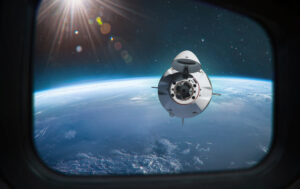The Simple Story of Elon Musk’s Education
1. Early Life and Childhood Learning
Elon Musk was born on June 28, 1971, in Pretoria, South Africa. School came tough for him. He studied at Waterkloof House Preparatory, at Bryanston High, and Pretoria Boys High. He did fine in school but was nothing extraordinary. and scored 61 for Afrikaans and a B for senior math. also loved to read and enjoyed puzzles. At age 10, Musk learned programming on a VIC-20. At 12 years of age, he designed a video game that he sold for approximately $500. Learning by doing became a hallmark of his early enthusiasm for technology.

2. Leaving South Africa for Opportunity
At 17, Elon applied for a Canadian passport through his mother. He wanted to avoid South Africa’s mandatory military service and explore more educational opportunities.
While waiting for citizenship, he studied at the University of Pretoria for five months.
In June 1989, he moved to Canada. He lived in Saskatchewan and worked odd jobs like farming and lumber milling to support himself.
3. Starting University at Queen’s
In 1990, Elon enrolled at Queen’s University in Kingston, Ontario.
He spent two years there. He took classes in physics and economics. and kept learning through projects and small ventures.
4. Transferring to the University of Pennsylvania
In 1992, Elon actually embarked upon transfer to the University of Pennsylvania.
Dual degrees were being pursued. A Bachelor of Arts in physics was attained whereas a Bachelor of Science in economics was attained from Wharton. He completed coursework by 1995, though UPenn officially awarded his degrees in 1997.
He paid tuition by hosting big house parties and working on business ideas like an e-book scanning plan.
5. Summer Internships in Silicon Valley
During college, Elon took two internships in Silicon Valley in 1994.
He worked at Pinnacle Research Institute on electrolytic supercapacitors for energy storage. Then he interned at Rocket Science Games in Palo Alto.
These real-world experiences taught him about tech and startups at a deeper level.
6. Briefly at Stanford—Then Acting Fast
In 1995, Elon got into Stanford’s materials science PhD program.
He enrolled, but left after two days. or felt the Internet held more chances to change the world. He pivoted instantly into entrepreneurship.
7. From Education to Entrepreneurship
That same year, he co-founded Zip2 with his brother Kimbal. It provided maps and directories to newspapers.
Compaq bought Zip2 in 1999. Elon made millions.
He used that to start X.com in 1999. This later became PayPal.
PayPal sold to eBay in 2002. Elon gained even more capital for what came next.
8. How Education Shaped His Path
Formal education gave him two core strengths: physics and economics.
He learned foundational science at UPenn. He learned business strategy at Wharton. Internships brought real-world tech exposure.
He has applied what he learned to create something – Tesla, SpaceX, and many other companies. He left grad school early and acted. That boldness came from being comfortable with risk and learning through doing.
9. Creating a New School for His Kids
In 2014, Elon pulled his children out of school. He created Ad Astra on SpaceX’s campus. It dropped grades and traditional subjects. The page was mainly concerned with first principles and creative problem solving. Ad Astra evolved into Astra Nova in 2020. It now runs independently for bright kids ages 10–14.
Elon led this educational experiment himself—applying his learning style to new generations.
10. Lessons We Can Learn
Here are simple takeaways from Elon’s education:
- Follow curiosity, even if school feels too slow.
- Learn by doing, as he did with early coding and internships.
- Choose what builds skills, not just prestige.
- Act decisively when opportunity strikes.
- Shape learning environments, like he did with Ad Astra and Astra Nova.
11. Quick Overview Table
| Stage | Action | Key Lesson |
| Pretoria schools | Learned basics, coded early | Find passion early |
| University of Pretoria | Short stay | Wait for the right chance |
| Queen’s University | Started college journey | Step out and learn on the go |
| University of Pennsylvania | Earned dual degrees | Build a strong academic base |
| Internships | Hands-on tech work | Gain real-world exposure |
| Stanford (2 days) | Left to build businesses | Trust risk when aligned with vision |
| Ad Astra / Astra Nova | Built own school | Reinvent education yourself |
12. Final Thoughts
Publicly, Elon Musk’s mistakes helped to preserve Tesla’s image. It began in school, continued in self-learning, and then reached bold risks. He merged science and business with action. and valued skills over credentials. He learned in classrooms, homes, and Silicon Valley internships. or turned those lessons into rockets, electric cars, and new schools.




